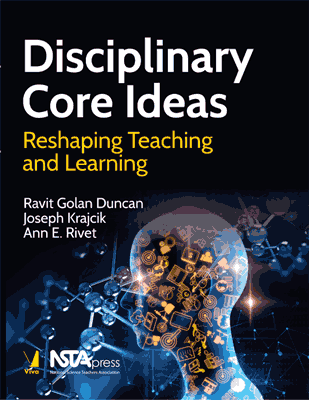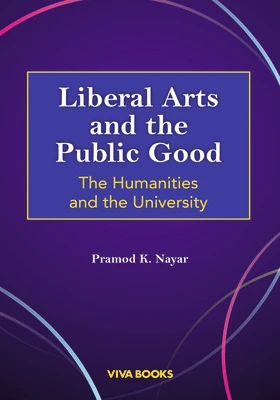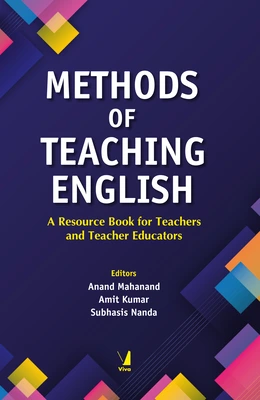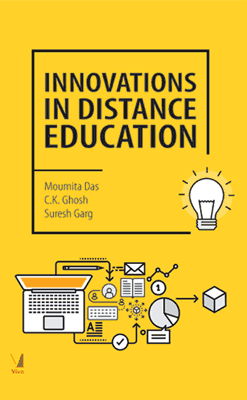Disciplinary Core Ideas
Disciplinary Core Ideas
Reshaping Teaching and Learning
₹895.50 ₹995.00 Save: ₹99.50 (10%)
Go to cartISBN: 9789387925281
Bind: Paperback
Year: 2019
Pages: 312
Size: 8.5 x 11 Inch
Publisher: National Science Teachers Association
Published in India by: Viva Books
Exclusive Distributors: Viva Books
Sales Territory: India, Nepal, Pakistan, Bangladesh, Sri Lanka
Like all enthusiastic teachers, you want your students to see the connections between important science concepts so they can grasp how the world works now-and maybe even make it work better in the future. But how exactly do you help them learn and apply these core ideas?
Just as its subtitle says, this book aims to reshape your approach to teaching and your students? way of learning. Building on the foundation, which informed the development of the Next Generation Science Standards, the book's four sections cover these broad areas:
- PHYSICAL SCIENCE CORE IDEAS explain phenomena as diverse as why water freezes and how information can be sent around the world wirelessly.
- LIFE SCIENCE CORE IDEAS explore phenomena such as why children look similar but not identical to their parents and how human behavior affects global ecosystems.
- EARTH AND SPACE SCIENCE CORE IDEAS focus on complex interactions in the Earth system and examine phenomena as varied as the big bang and global climate change.
- ENGINEERING,TECHNOLOGY, AND APPLICATIONS OF SCIENCE CORE IDEAS highlight engineering design and how it can contribute innovative solutions to society's problems.
Disciplinary Core Ideas can make your science lessons more coherent and memorable, regardless of what subject matter you cover and what grade you teach. Think of it as a conceptual tool kit you can use to help your students learn important and useful science now-and continue learning throughout their lives.
Target Audience:
Science teachers teaching Elementary, Middle and High School.
Contents:
Foreword by Helen Quinn
Acknowledgments
About The Editors
Contributors
Chapter 1: Introduction To Disciplinary Core Ideas: What They Are and Why They Are Important (Joseph Krajcik, Ravit Golan Duncan, And Ann E. Rivet)
Physical Sciences
Chapter 2: Core Idea Ps1: Matter And Its Interactions (Kristin Mayer And Joseph Krajcik)
Chapter 3: Core Idea Ps2: Motion And Stability: Forces And Interactions (David Fortus And Jeffrey Nordine)
Chapter 4: Core Idea Ps3: Energy (Jeffrey Nordine And David Fortus)
Chapter 5: Core Idea Ps4: Waves And Their Applications In Technologies For Information Transfer (David Fortus And Joseph Krajcik)
Life Sciences
Chapter 6: Core Idea Ls1: From Molecules to Organisms: Structures And Processes (Aaron Rogat, Barbara Hug, And Ravit Golan Duncan)
Chapter 7: Core Idea Ls2: Ecosystems: Interactions, Energy, And Dynamics (Charles W. (Andy) Anderson And Jennifer H. Doherty)
Chapter 8: Core Idea Ls3: Heredity: Inheritance And Variation Of Traits (Nicole A. Shea And Ravit Golan Duncan)
Chapter 9: Core Idea Ls4: Biological Evolution: Unity And Diversity (Cynthia Passmore, Julia Svoboda Gouvea, Candice Guy, And Chris Griesemer)
Earth And Space Sciences
Chapter 10: Core Idea Ess1: Earth's Place in the Universe (Julia D. Plummer)
Chapter 11: Core Idea Ess2: Earth's Systems (Ann E. Rivet)
Chapter 12: Core Idea Ess3: Earth And Human Activity (Nancy Brickhouse, J. Randy Mcginnis, Nicole A. Shea, Andrea Drewes, Emily Hestness, And Wayne Breslyn)
Engineering, Technology, And Applications Of Science
Chapter 13: Core Idea Ets1: Engineering Design (David E. Kanter And David P. Crismond)
Chapter 14: Core Idea Ets2: Links Among Engineering, Technology, Science, And Society (Cary Sneider)
Chapter 15: Conclusion (Ann E. Rivet, Joseph Krajcik, and Ravit Golan Duncan)
Appendix: Disciplinary Core Ideas And Their Components
Image Credits
Index







